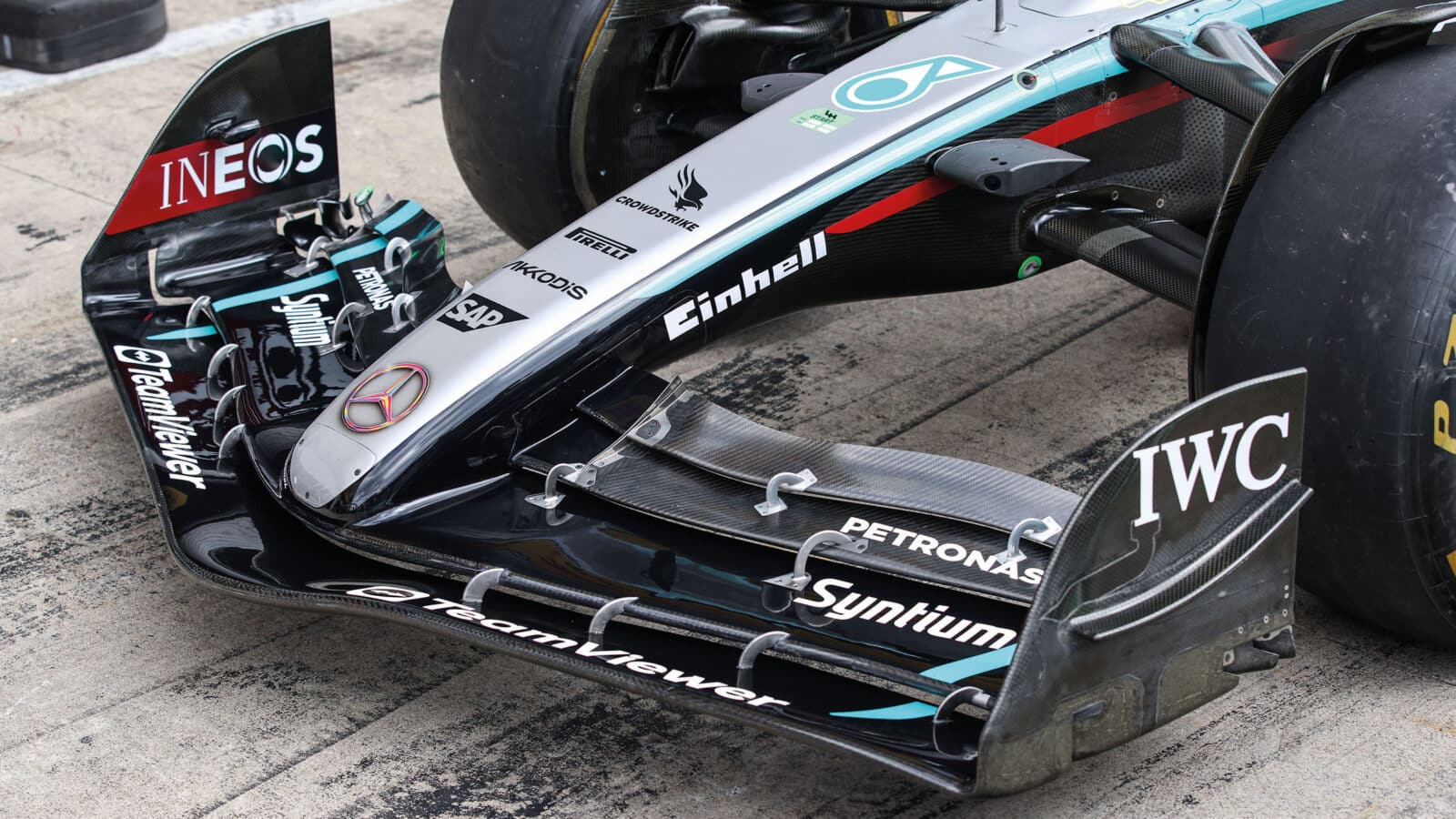Mercedes is flying with new F1 front wing
In Canada, technical director James Allison explained how an aero upgrade had made the team competitive again

First seen in Monaco, Mercedes’ new front wing has led to an upturn in form
DPPI
After a very difficult start to the season – its third in the last three years – Mercedes suddenly hit form in Canada as George Russell took pole position and led a significant proportion of the race. Two races later, in Austria, he took the team’s first victory since Brazil 2022. Although the win was a fortunate one, coming after Max Verstappen and Lando Norris had collided and punctured, the Mercedes was still in far better competitive shape than earlier in the season.
The breakthrough came with a new front wing, introduced on Russell’s car at Monaco, and used on both cars since. Technical director James Allison explained in Montreal some of the problems they’d been facing with the car and why the new wing was such a powerful upgrade.

“The front wings on these cars are very big. They probably like being near the ground most of all, and that tends to make a car get more nervous as it goes faster, because proportionately more is moving to the front axle than you might wish. And so you’re fighting that with these rules. And the more you find downforce near the ground, the worse that gets.
“The previous wing is now in the past. It allowed us to create the discontinuity in a wing that was anticipated by the rules to be relatively continuous. And that discontinuity allowed a bit of vigour to be injected downstream of the front wing.
“There is always a tendency for low-speed understeer and high-speed oversteer. But the more extreme you make it, the more tricky the car feels to the driver. You can do things with the mechanical balance [to counteract that], but if you take away the aerodynamic unhappiness that mechanical balance is fighting, then you can have a less extreme mechanical balance migration and a car that feels more consistent and predictable to the driver.”

